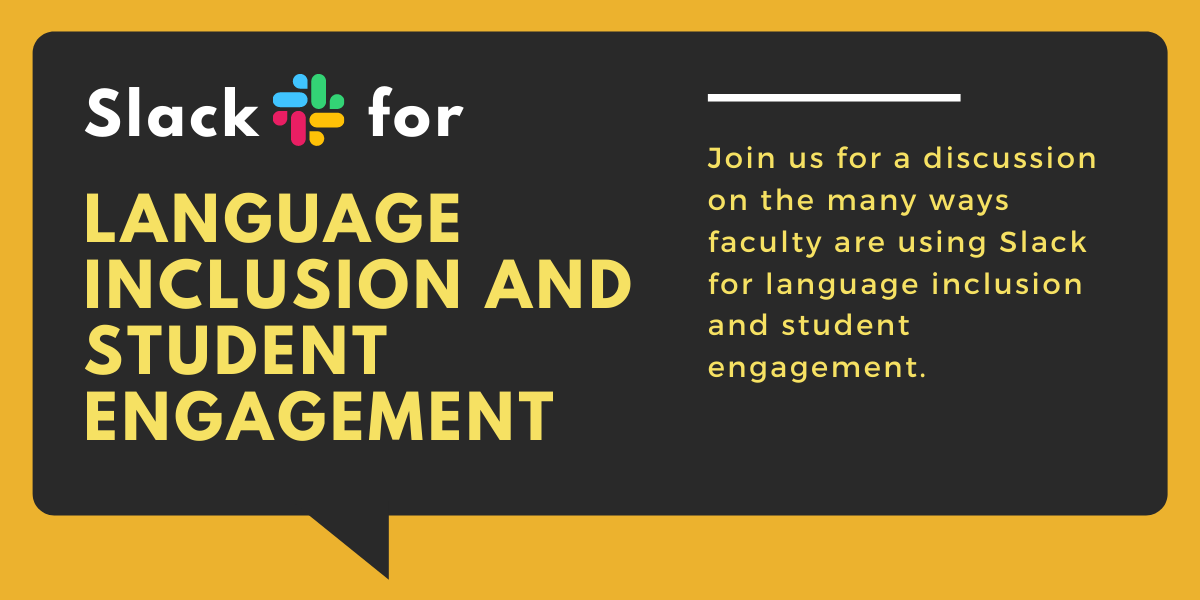Last month, ITS partnered with the Writing Program for a faculty-led discussion on the many ways people use Slack for student engagement and language inclusion.
Slack is a channel-based messaging platform that allows members to work together more effectively. It integrates well with other software tools such as Google and Zoom. It allows people to find the information they need quickly and is pretty easy to use. There is a free and a paid version. Various departments across campus use Slack’s free version.
During the panel discussion, we heard from Dawn M. Carone, Associate Professor of Genetics, Jody Joyner, Assistant Professor of Art, Karen Chan, Assistant Professor of Marine Biology, and Natalie Mera Ford, Visiting Assistant Professor of English Literature and Multilingual Writing Specialist, Writing Associates Program.
Each professor described how they use Slack for courses, labs, and programs both before and after the pandemic. Below are some useful tips for using Slack from our discussion.
Announcing Office Hours
One way Professor Carone uses Slack is by announcing office hours reminders. Students may receive a Slack notification if they are online or have joined a specific channel. You could also instruct students to send you direct messages or “DMs” within a certain time frame to give instant feedback during office hours as well.
Peer-to-Peer Learning
Slack provides a way for students to quickly support each other’s learning. This is especially helpful during late-night study hours. Asking students to post images of their work for studio art class allowed Professor Joyner’s students to give each other written and verbal critiques before and after class. This helps build different pathways of communication, trust, and community between the students while learning together.
Random Channel
The random channel is great for ice breakers. Students can post their intros, including their pronouns and something fun about themselves. It’s also great for posting trivia and discussing current events that are relative to the course.
App Integration
One of Slack’s best features is its use of app integrations. For the purpose of our discussion, Professor Mera Ford and I highlighted a Language Translation Slack Bot called UnTangle. You can set this app up to automatically translate all the messages in a Slack channel to the desired language in real-time. The bot can translate messages into over 100 languages. You can also enable personal translation; this will translate all the words in a channel or DM into user-specific language.
In addition to the Language Translation Bot, you can add apps that allow you to connect Google Drive, Zoom, and Poll Everywhere. You can discover dozens of more apps by searching Slack’s app directory.
Adjust Notifications
By default, Slack will send you a notification of any direct messages and mentions you receive. However, you can change your preference to be notified only during certain hours or on certain days, by setting a notification schedule.
Collaborate with Colleagues
Slack can be a great communication tool that is very versatile. In addition to some of the use cases listed above, Professor Chan also mentioned, it can be a great way for you to work on collegiate projects with colleagues and collaborators outside of your institution through shared channels or guest accounts.
If you or your department is interested in learning more about Slack, please reach out to us at support@swarthmore.edu to discuss further.

